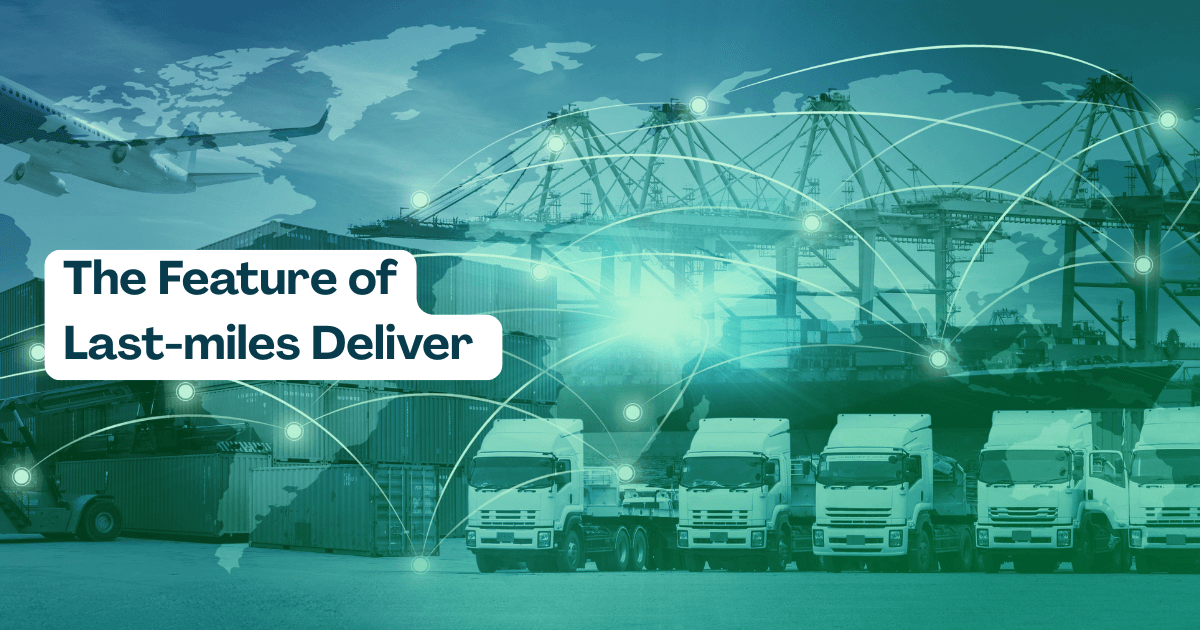The Future Of Last-mile Delivery: Autonomous Innovation And Emerging Technologies.
Written By:
Ada

Written By:
Ada

Autonomous delivery vehicles transitioned from experimental prototypes to commercial operations with measurable impact. Nuro, Silicon Valley pioneer, successfully deployed autonomous delivery vehicles in partnerships with Domino's and Walmart, demonstrating real-world viability for grocery and meal delivery.
Market growth indicators include over 1,000 patents filed between 2019-2023 in autonomous delivery, 50 patents classified as groundbreaking innovations, 2,500 scientific publications demonstrating research intensity, 80 startups entering the autonomous delivery market since 2015, and global market valuation expected to reach $84.9 billion by 2030.
Loxo's Digital Driver software represents cutting-edge autonomous navigation technology providing SAE Level 4 driving autonomy for commercial vehicles on public roads. Their partnership with Planzer in Switzerland's Bern demonstrates how autonomous vehicles navigate complex urban environments including narrow streets and challenging architectural constraints.
Amazon Prime Air continues advancing drone delivery capabilities with operational programs in College Station, Texas, and Lockeford, California, plus pilots in UK and Italy. The service delivers packages up to 5 pounds within 30 minutes offering unprecedented speed for lightweight deliveries while completely bypassing ground transportation infrastructure.
Technology capabilities include 10-mile delivery radius from fulfillment centers, 30-minute delivery window for eligible packages, advanced obstacle avoidance and safety systems, weather-adaptive flight planning, and integration with existing logistics networks.
Starship Technologies deployed thousands of small autonomous delivery robots navigating sidewalks and delivering packages directly to customers. These robots use advanced AI navigation, sensors, and GPS systems handling short-distance urban deliveries with high reliability and customer satisfaction.
Operational advantages include 24/7 operational capability without human limitations, zero direct emissions supporting sustainability goals, lower operational costs than traditional delivery methods, enhanced security through tracked monitored processes, and reduced traffic congestion by avoiding road infrastructure.
Walmart's Alphabot system demonstrates how robotic automation extends beyond delivery to order fulfillment. AI-powered robots retrieve items from storage and assemble orders for pickup or delivery, significantly reducing time between order placement and dispatch while improving accuracy and efficiency through continuous learning, reduced human error, faster processing times, improved inventory accuracy, and enhanced scalability.
The sharing economy continues reshaping last-mile delivery through platforms connecting local drivers with delivery opportunities. Amazon Flex leverages independent contractors using personal vehicles, creating flexible delivery networks scaling dynamically with demand while reducing fixed infrastructure costs.
Modern consumers expect seamless integration across online and offline channels driving development of hybrid delivery models. Buy-online-pickup-in-store (BOPIS) and ship-from-store models become mainstream, enabling retailers to leverage existing physical infrastructure for improved delivery efficiency.
5G networks enable real-time communication capabilities essential for autonomous vehicle coordination, drone traffic management, and dynamic route optimization. Edge computing processes data locally, reducing latency and enabling split-second decisions critical for autonomous navigation safety.
AI capabilities continue expanding beyond route optimization to include natural language processing for customer interactions, computer vision for package handling, and predictive analytics for demand forecasting enabling more sophisticated automation and improved customer experiences.
Autonomous delivery vehicles will integrate with smart city ecosystems, sharing data with traffic management systems, coordinating with public transportation, and optimizing urban resource utilization. This integration promises improved traffic flow, reduced congestion, and enhanced overall urban mobility.
The transition to electric and autonomous delivery fleets requires substantial infrastructure investment in charging stations, maintenance facilities, and communication networks. Amazon's installation of 24,000 chargers across 150 US delivery stations demonstrates required infrastructure development scale.
Consumer expectations continue escalating with same-day delivery becoming standard rather than premium service. 46% of logistics providers now invest significantly in new technology to meet expectations while maintaining cost competitiveness and service quality.
Consumers increasingly expect personalized delivery experiences tailored to individual preferences, schedules, and requirements including preferred delivery windows based on historical patterns, location-specific instructions for complex addresses, communication preferences for updates, service level selection balancing speed and cost, and special handling requirements for sensitive items.
Government agencies worldwide develop regulatory frameworks for autonomous delivery vehicles, balancing innovation encouragement with public safety requirements. These regulations will significantly impact deployment timelines and operational capabilities including safety certification requirements, insurance and liability frameworks, traffic integration rules, data privacy regulations, and cross-border coordination.
Aviation authorities establish controlled airspace systems enabling safe drone delivery operations while maintaining traditional aircraft safety. FAA and international equivalents develop beyond-visual-line-of-sight (BVLOS) regulations essential for commercial drone scaling.
Companies must strategically prioritize technology investments to maintain competitive positions while preparing for future market conditions. Investment framework includes autonomous navigation systems for long-term competitive advantage, electric vehicle infrastructure for immediate sustainability gains, AI and analytics platforms for operational optimization, customer experience technology for differentiation, and partnership development for technology access and market expansion.
Successful navigation requires careful risk management and strategic positioning including technology timeline assessment for investment planning, regulatory compliance preparation, competitive positioning relative to innovation leaders, customer expectation management during transitions, and operational resilience maintaining service during implementation.
The future will be defined by companies successfully integrating autonomous technologies, sustainable operations, and exceptional customer experiences. The transformation from traditional methods to autonomous, intelligent systems represents tremendous opportunity and significant risk for established participants.
Success factors include technology leadership investing in advanced delivery technologies, customer focus enhancing experiences while managing expectation evolution, sustainability integration achieving operational efficiency and environmental responsibility, partnership development collaborating across ecosystems for accelerated innovation, and adaptive strategy remaining flexible as technologies and markets evolve.
Strategic imperatives include beginning autonomous vehicle pilot programs, investing in AI and analytics capabilities, developing sustainable delivery options, creating partnerships with technology innovators, and preparing organizational capabilities for managing technological complexity. The delivery revolution requires strategic action today as companies delaying technology adoption risk displacement by innovative competitors embracing automated, intelligent, sustainable delivery operations.